You have no items in your shopping cart.

NABC London Finals We are proud to announce ‘The Repton’ have 3 boys in The London Finals of the NABC’s On Sunday 28th October 2012 The Boys Boxing are as follows… Billy Beer Boxing first on the programme Kwaku Sapong Boxing sixth on the programme Jordan Blake Boxing seventh on the programme The Venue is Harlow Greyhound Stadium, Roydon Rd, Harlow, CM19 5DY Tickets are available on the Door…Adults £15 Children £5 Weigh-In is between 11am & 1pm Boxing Commences at 2pm All our boys are really up for winning a London title, so please come along and support our boys…but more importantly show your support for Amateur Boxing !
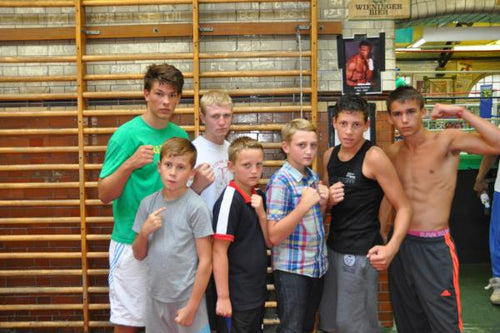
…Hancock Box Cup November 2012… We are proud to announce that, this year we have a team of 11 boys Flying out to Skive Denmark to compete in The 2012 ‘Hancock Box Cup’ on the 9th10thand 11thNovember. The tournament will take place at The Resen Sports Hal, in Skive. Again this year, it will be possible for family and friends to see the fights on ‘LiveTV’ . Go to http://www.livesporttv.dk/ It is possible to watch the fights after they have taken place, on replay mode. Those boys are as Follows… Jessie Beck 42 kgs, Peter Protain 57 kgs, Jesse Dean Harris 60kgs, Ben Gentle 56 kgs, Michael Oats 34 kgs, Levi Lee 38 kgs, Robert Beck 48 Kgs, Noah Stanley 44kgs, Rakim Tatou 35 kgs Levi Coates 40 kgs, Tyrane Wynter 52 kgs This is an Annual Event in which our boys take on other Junior International Boxers to compete for Bronze, Silver and Gold Medals.There will also be Cups to the Best Club, The Best Boxer and The ‘Best pound for pound’ Boxer and the Best Technical Boxer ! We wish our team the Best of Luck and a safe Journey !

We are introducing a brand New Weekly Blog called '10 Rounds with Repton BC'. The Idea is that we ask 10 Quick, short Questions to any Repton Boxer, Ex Boxer or Celebrity that use to Box to take part, to get an idea of what makes them tick. It will reveal what Boxing means to them and what Boxing has taught them as a young man ! ...We Kick off this week with one our most decorated Juniors James Branch. He has won 2 ABA titles 1 NABC title, 2 Gold Medals in The 'Three Nations' Championships and a Gold Medal at The Vestjysk Cup in Denmark ! This season James, at the age of 17, steps up into The Seniors as one of our Best Prospects ! James Junior is definately a 'Chip off the ol' Block'... His Dad, James Branch Senior won for the club, an Impressive record of 9 National titles before him back in the 80's. Here we go, for the very first time...Round one of '10 rounds with ReptonBC' with James Branch Junior... RBC 1.WHO IS BEST BOXER OF ALL TIME: JB... Thomas 'hitman' Hearns RBC 2. BEST FIGHT YOU HAVE SEEN: JB... Marvin Hagler vs Thomas Hearns, was a thrilling, entertaining war all 3 rounds it lasted. RBC 3.WHO DO U RECKON IS THE BEST FIGHTER AROUND TODAY: JB ... Manny Pacquiao 4. HOW MANY FIGHTS HAVE YOU HAD: JB...14 5.WHERE WAS YOUR BEST FIGHT: JB.... At the Liverpool 3 nations, both fights I boxed very well to win the gold medal! 6. WHO WAS YOUR TOUGHEST OPPONENT: JB ... Michael Huges, my 3rd fight on the repton show at East ham working mans club, he was a lot taller than me, I was around 5 foot 10 at the time and he was about 6 foot 3 and he had already had 25 bouts and was older than me but I gave it my everything and won it on a unanimous decision! 7. WHY DID YOU TAKE UP BOXING: JB... I started boxing because it runs in the family, my dad was a very succesful amatuer boxer, he won 9 national titles and is a big inspiration to me. 8. WHAT HAS BOXING TAUGHT YOU: JB.... Boxing has taught me discipline, and respect to other boxers as I realise what it takes to get in the ring, and how much of lonely place it can be! 9. WHY DO YOU LIKE BOXING: JB... I love boxing because even though you have to give your life to the sport, when you win a title/fight you realise that it was all worth it and after you get your hand raised it is the best feeling in the world. 10. IF YOU DIDNT BOX WHAT OTHER SPORT WOULD YOU DO? JB... If I didnt box I would play basketball or darts player, im quite good at throwing a dart! Thanks James...I think Boxing is definately your sport.Stay with it !

Weekly Blog 22ndOct – Novices Finals Results We are plesed to announce, The Repton Had 3 boys through to the Novices Finals yesterday (Sun 21stOct) at The TA centre in SE12. Our First winner was Ohara Davies. His Fight could be described as eventful, as he caught his opponent with a decent punch that put him down for a standing count. His opponent then got up off the canvas to knock Davies over on to the floor. He then got up to outbox his boy to win the contest ! Next up Lawrence Okolie in the 91kg division went on to win a unanimous decision, by out boxing his opponent ! Unfortunately our last boy on, Joe Seabrook looked below par and lost his bout. Our two Winners Ohara Davies and Lawrence Okolie will be boxing in the next stage of the Novices ‘Under 10 bout’ Competition at Feltham on the 3rdNovember. I will post More details about the Venue on this blog, as and when I receive them.

…NOVICES FINALS - 20th/21st October... This week at The Novices Semi-finals & Finals which are taking place at The T.A.Centre Baring Rd, Grove Park. London SE12 on Sat 20th Oct and Sunday 21st Oct From The Repton, we have 3 boys in the Semi-finals on Saturday 20th, John Grim, Laurence Ollie and Tim Ablette who will be fighting for a place for the Finals, which take place the following day on Sunday. In the Finals on Sunday we have two boys already in the Finals. They are Ohara Davies and Joe Seabrook. The Weigh-in is between 10am and 12 Midday. The Boxing Commences at 12:30pm. Please come along and support our Boxers, but more importantly, Support Amateur Boxing !
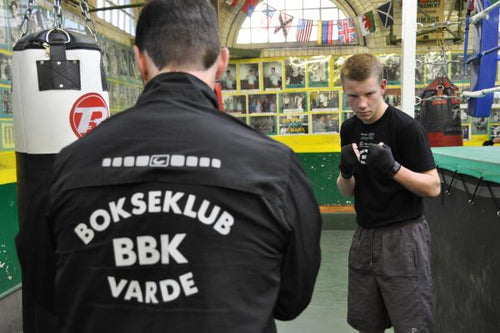
Repton Weekly Blog 19/10/2012 – ‘Danish team in Gym’ This week, Carsten Holm and his team of Boxers from the BBK Varde club in Denmark flew into London to spend a week training and sparring with the Repton team. It was an unusual sight in the Gym to see girls training with the boys ! …An event that was new to the Repton, apart from when Cheryl Cole turns up for the occasional photo shoot or video session ! The team are here this week to pick up training techniques and get in some decent sparring with our boys ! If you go into our ‘Photo Gallery’ on the website you can see the team training with our lads.

We had 10 boys entered this year for the NABC 2012 championships. On Saturday The Repton had 8 boys go through to the Next Stage on Sun 28th Oct Back at The Harlow Greyhound Stadium in Harlow Essex. Repton boys through to the ext stage are as follows...James Branch 86 kg Harvey Horn 48 kg Sunny Edwards 46 kg Reggie Thrower 50kg Billy Beer 57 kg Jordan Flynn 60 kg Kwaku Sapong 63.5 kg Jordan Blake 67 kg Please see below the Full results of the Show which took place on Sat 13th Oct NABC 2012 Results Saturday 13th October - Class Weight (Kg) Name Result Club Name Club A 54-57 Semi Final Daniel Barode Unanimous Fisher Mason Smith Finchley B 57-60 Semi Final Liam Joseph Retired 2 Repton Adam Chaima Finchley B 57-60 Semi Final Miles Connors Majority West Ham Kevin Reavell West Ham B 60-63 Semi Final Joe McDonagh Majority Lynn Sean Robinson Hooks B 63-66 Final Jordan Reynolds Unanimous West Ham Pat McDonagh Lynn B 66-70 Semi Final Douglas Doherty Majority West Ham Yahia Chelli Dale Youth B 75-80 Final Shane McDonagh Unanimous Stowe Michael Dunphy Repton C 57-60 Final Rocky Wadhams Unanimous Dale Youth Sam Bezzina West Ham C 60-63.5 Semi Final Lewis Stanley Unanimous Dale Youth Mohammed Qauyumi Islington C 63.5-67 Semi Final Jordan Blake Majority Repton Anthony Ward Islington C 63.5-67 Semi Final Taofeek Maja Majority Lynn Sohail Iqbal Northolt C 67-71 Final Khaliq Miah Unaninmous West Ham Johnny Coyle Newham Sunday 28thOctober 2012 at Harlow Greyhound Stadium Class Weight Name Club Name Club A 54-57 Final Billy Beer Repton Daniel Borode Fisher A Ernie Rutherford Orpington Frankie Newman Lynn B 57-60 Final Adam Chaima Finchley Miles Connors West Ham B 60-63 Final Ted Cheeseman Fisher Sean Robinson Hooks B 66-70 Final Randall Brunyee Bromley and Downham Yahia Chelli Dale Youth C 60-63.5 Final Kwaku Sarpong Repton Lewis Stanley Dale Youth C 63.5-67 Final Jordan Blake Repton Taofeek Maja Lynn Walkovers Class Weight Name Club A 44-46 Sunny Edwards Repton A 48-50 Thomas Gailbraith West Ham A 50-52 James Delaney Finchley A 52-54 Jack Brooker Northolt A 57-60 Jordan Dhanjal Flynn Repton A 60-63 Evnnis Chaima Repton A 63-66 Haroon Nikai Fairbairn A 66-70 Ellis Delaney West Ham B 46-48 Harvey Horn Repton B 54-57 Archie Sharp Lynn B 80-85 James Branch Repton C 54-57 Gerry Mcdonagh Lynn C 71-75 Ashley Surin Bromley and Downham C 75-81 Jimmy Smith West Ham
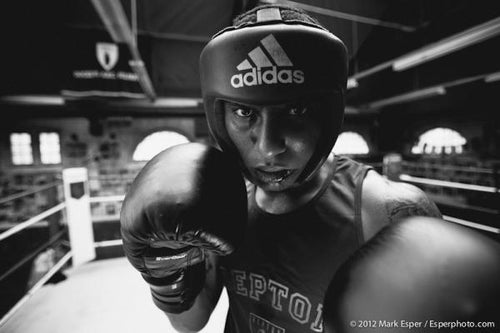
Blog 12/10/2012 Repton have 10 boys in The æLondon FedsÆ Finals on Sat 13th October, at Harlow Greyhound Stadium, Roydon Rd, Harlow, CM19 5DY The Following Repton Boys have earned their place in the Finals James Branch 86 kg Harvey Horn 48 kg Sunny Edwards 46 kg Reggie Thrower 50kg Liam Joeseph 60 kg Michael Dunphry 80 kg Billy Beer 57 kg Jordan Flynn 60 kg Kwaku Sapong 63.5 kg Jordan Blake 67 kg Weigh-in 11 am û 1pm Boxing Commences at 2pm Tickets Adults ú15 Children ú5 Please Come along and support The Club & our boys, but most importantly to support Amateur Boxing and all the young men who devote their lives, in the pursuit of Higher Achievement through Sport. The Following Saturday 20th Oct we have 5 boys through to the Semi-Finals & London Finals of the 2012 Novices National Championships

2 boxers with London Repton Club declare intention to fight for Nigeria Two Nigerian boxers with Repton Boxing Club of London, Umar Sadiq and Ben Falaja on Sunday in Lagos declared their intention to fight for Nigeria if called to camp. The duo disclosed this to journalists at the end of a three-day third annual International Bout with Lagos Boxing Club held between Sept. 21 and Sept. 23. The first leg of the two-legged bout was held at Ikoyi Hotel and Suites, Victoria Island, Lagos while the return leg was held at the Indoor Sports Hall of the National Stadium, Lagos. Lagos Club won the first leg 4-2 while Repton avenged with a 4-1 victory in the return leg. Sadiq and Falaja said that they were willing to assist Nigeria with their wealth of experience and exposure to help bring back the lost glory of the sport in the country. According to them, Nigerian boxers are talented, but needed exposures for them to withstand and overcome their foreign counterparts at international competitions. Sadiq, 24, from Kano State, said that he took to boxing as a way of recreation while schooling in London. Falaja’s father, Mr Abayomi Falaja, who was present at the bout, told NAN that Nigeria has lots of sports potential in Diaspora who could help Nigeria regain its lost glory in sports. “I play table tennis, but my son said he loved boxing and I gave him all my support. I just hope he will be called to the camp for him to express his determination,’’ he said. Falaja’s father, a former Lagos State table tennis champion, then urged sports administrators in the country to ensure that discovered talents were exposed for sports to thrive in the country The 81kg boxer who said her mother was from Benue, said he was discovered by the Repton Club while representing his school and he had since won several competitions in London. Sadiq who sealed his club 4-1 victory in the return leg of the bout against Wasiu Balogun of Lagos Club, said that he was in Nigeria’s camp during preparation for the just-ended London 2012 Olympics. “But I was dropped because I sustained injuries,” the dark complexion Sadiq said, adding, however, that he was still willing to fight for Nigeria if he was invited. “I am still willing to use my experience and exposures to help Nigeria regain its feat in boxing if I am called to camp again,’’ Sadiq said. Falaja, 23, from Ijebu-Ode, Ogun, said that his ambition was to be among Nigeria’s boxers for the Rio de Janeiro 2016 Olympics in Brazil. The 69kg boxer who in the second leg of the bout outpunched his Lagos Club rival, Ganiu Hammed, said he was also discovered by Repton Club. The light complexion boxer of British mother said he developed love for boxing since he was six years old and that he had won several national and international clubs championships.

The Repton Boxing Club featured on last nights (27th Sept) 'Boxing hour' at around 54 minutes into the show....Check out Thursday Nights 'Boxing hour' on London BBC Radio 94.9 FM and BBC iPlayer, with Steve Bunce by clicking on to the link http://www.bbc.co.uk/iplayer/search?q=boxing%20hour
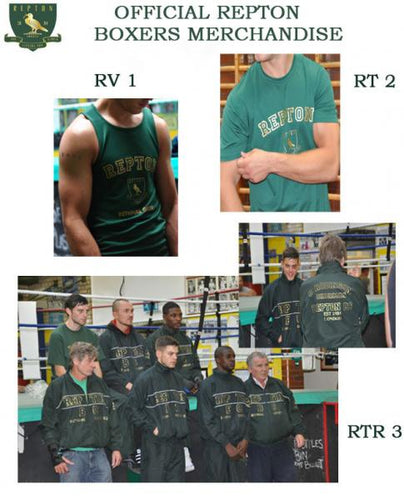
We are pleased with our new Website which is very up to date and dynamic. We have a very Active interlinked social media network with ‘Facebook’ and ‘Twitter’ which you can access by just clicking on the Icon Buttons on our Front page. We welcome anybody, friends or former members of the Repton Family, who may have any old Archive pictures that we can put up in our Archive photo Galleries. If we have missed anyone out in our vast back catalogue of Boxing records, on our 'Roll of Honour' Lists, please write in and tell us. At last, we have an ‘Official Merchandise’ Link which you can click on if you have any interest in acquiring some of our ‘Limited Edition’ Merchandise. Just simply click on the ‘Repton1884 Clothing Range’ Icon to register your Name and email address on being kept posted on future ‘Limited Edition’ apparel. At the moment we have available Vests, Tee-Shirts, Hoodies and Tracksuits. More items will be added in the future If you want to order any ‘Limited Edition’ Vests, Tees or Tracksuits simply send an email to info@reptonboxingclub.com Stating your Name, Home Address, Phone number, Age, Size, what item you require & email address. We will be in touch.

Our first Junior outing this year will be to Denmark, which will be on November 9th…The team will be announced at a later Date. As usual we have a very strong Junior section this year. Our Matchmaker/Comp Sec. Mr Kelvin Wing has just come back from the ABA office with 46 stamped Medical cards for our Junior Squad ! Our First Senior Dinner/Boxing Event this season will be our Annual Show at The Prince Regent Hotel in Chigwell…This will be an Open class Show against a team from Sunderland Tickets are £60 for 3 course meal and Boxing ….for Boxing only tickets are £10 (Adults) £5 (under16’s)…or you can pay on the door…. Tickets for tables of 8/10/12 Guests can Only be obtained from Mr Barry Davenport on 07951 577 755 or by sending an email to info@reptonboxingclub.com This show is always a sellout and tickets should be booked early to avoid Disappointment!
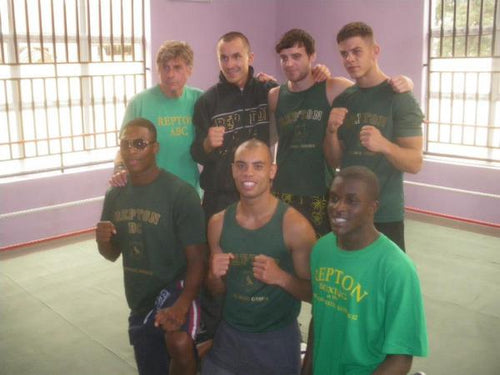
Lagos 2012 It has been an eventful start to the New season. Our senior team has just got back from a Successful trip from Lagos Nigeria. We had 2 tournaments, of which we Won one and lost one. The Nigerians a very tough but overcome them the second time round. We would like to Thank our President Mr Dabs Edun for making sure the boys were well looked after and providing everything we could ask for to make our stay as pleasant as possible ! This is our third Annual trip to Lagos and the team this year consisted of Thomas Tear – 64k, O’Hara.Davies – 63k, Ryan Pickard – 73k, Umar Sadiq – 81k, Karol Ozimkowski – 69k, and Ben Falaja – 69k. Check out the recent potographs from Lagos 2012 in our 'Photo Gallery' section.

Unfortunately the public’s general view of Boxing is sometimes seen as a Violent and aggressive sport. This is partially fuelled by the crowd lust for blood and a brutal fight and a false belief that a fighter must be motivated by hate and dislike for his opponent. This has come about over the last 20 to 30 years or so with the help of the media & Hollywood glamorising the Noble Art with blood and violence. In turn this has created a misguided impression on a generation of children, future boxers and the general public, on how to conduct themselves in a boxing audience and training environment. I can only speak from personal experience, having come from the ‘Golden Era’ of Boxing at The Repton , ‘Home of Champions’ in the sixties and seventies. I would say that the majority of Boxers who represented the club and country back in those days, were taught to box in an environment which encouraged good sportsman like behaviour with discipline in and out of the ring. Also most importantly, we were taught not to let our emotions influence your actions in the ring. Anger being the worst and most distracting emotion and Fear a close second ! The emergence of ‘Unlicensed’ and ‘white collar’ boxing, has evolved over the last 15 years and morphed into a violent and brutal video game, to emote shock and sensation, for bloodthirsty punters. This has happened because the bottom line is profit. When money is introduced to the equation, conflict of interest is always the next obstacle for the mind to deal with. Because of our human conditioning and natural desire to win and be competitive, some people will stop at nothing to do what is necessary to achieve that goal. The result is, we get Thuggish displays of behaviour and wrong attitude, similar to those recently between David Haye and Derek Chisora at a press conference. These Boxers are meant to be role models for our future Boxing generation. Throughout boxing history, over the years, we have witnessed that a good Boxer will always beat a strong fighter. Why is this ? As a young man, the combination of peak physical fitness and excess quantities of testosterone, pumping trough your body, can create a thin dividing line between controlled aggression and action controlled by emotion. The trick is to be able to focus your mind on the job in hand and operate in the ‘Moment’. Hence the old saying “Boxing on your feet” .Don’t get me wrong. You can’t be a Good boxer by taking aggression and assertiveness out of the equation, otherwise we would be turning out a bunch of losers and not Champions. I would suggest that you can develop a controlled aggression through discipline and right attitude toward the sport, your trainer and your opponents. Call me old fashioned, but if you take emotion out of the equation and replace it with discipline and fitness of body and Mind, you can only end up with an unstoppable fighting machine that embraces the Noble Art as a dance and a game of chess that was always intended from the birth of the sport. Ukrainian lightweight, Boxer Vasyl Lomachenko is a perfect Role model for Amateur Boxing. He is currently the Best pound for pound Amateur Boxer on the planet ! If you think about this deeply, you will realise that every ‘Action’ we carry out in our daily life comes from our Minds. The Mind is like a jungle, forever babbling with thoughts and feelings from the past and future. This can be major distraction for anyone who wants to become a high achiever, in any area of competitive sport. As a Boxer and sportsman, if your mind is as fit and clear as your highly trained body you will be able to focus more clearly on the task in hand rather than be driven by emotion. A mind which is influenced by emotion will always lead us into making wrong decisions and bad mistakes, which in turn results in failure! ...Food for thought from Mark Newman

To the casual fan, a boxing match looks like two individuals standing in a ring attempting to knock each other’s heads off with a strong hook. And that’s definitely a part of it. However, there’s a lot of art and science in pugilism. A boxing match is like the ultimate chess match in a sense, only you’re using much more than your mental attributes. Anyone brave enough to step into a boxing ring needs to understand that it’s about the physical and the mental. And that obviously means that rigorous training plays a constant role in any boxer’s life. Here are some training tips that any amateur boxer can use to better his skill set. Different Training Tips and Methods Using the Right Gear For safety reasons and to ensure that you’re getting the most out of your training, it’s important that you use the right gear when you train. Having the right shoes, A proper Gumshield, the appropriate head gear, and even the right bags will help you to stay safe and train properly. It’s going to be a relatively costly investment, but having the right gear and staying safe is something you can’t put a price tag on. Practice what you Punch Jabs, hooks, crosses, uppercuts – there are a lot of different punches thrown in boxing, and they’re usually thrown in combinations. This means that there’s always a chance to injure yourself. If you’re not punching correctly, you could dislocate fingers, crack knuckles and other bones in your hand and wrist, and even experience shoulder and back injuries. You should always practice throwing your punches through bag use and through sparring. It’s all about technique here. Living the Proper Lifestyle Diet and exercise is very important. You might think that training hard has you covered, but you have to live a life outside of the gym, and this means eating the right foods, getting enough sleep, staying away from drugs, alcohol, cigarettes and other bad habits, and avoiding any trouble whatsoever. This obviously includes street brawls and bar fights. You don’t have to live like a monk or priest, but you should live right, keep your head down and focus on your training. Developing Your Footwork Unless you have the right footwork, you’re going to find that your boxing career is very short-lived. Footwork not only means the proper stance, but also the way you move. To practice, it helps to focus on your movement and watch your footwork when shadowboxing in front of a mirror. Practise this also when shadowboxing in the ring. It is good to get familiar with every inch of that canvas. Quick, stable feet are crucial in the boxing ring. The Right State of Mind There’s nothing more important in boxing than being in the right mindset to carry out the task of training and fighting. It was one of the greatest boxers of all time, Mike Tyson, who said it brilliantly when stating that everyone has a game plan ‘til they get hit. How will you react after getting hit? That’s what counts. Ironically enough, you can learn the “what not to do” by focusing on Tyson’s many meltdowns as well. Train your mind to be strong here. Boxing training is pretty straightforward in terms of key principles. You’ll find that it’s the little things you do that make the biggest differences, so remember to focus on your task and to live a boxer’s life if you’re expecting make an impact in the ring. In the beginning, Its important to listen carefully to your trainer and not to pick up bad habits. What we have covered here are just basic principles for beginners. Watch out for future blogs about more in depth methods and techniques!















